堅牢優美な輪島塗
Robust and elegant Wajima lacquerware
輪島塗は、堅牢な下地作りが特徴的で、丁寧かつ高い技術により優美な仕上がりへと昇華されます。
全国の漆器産地の中でも重要無形文化財の指定を受けている輪島塗には124の製作工程があり、工程ごとに専門の職人集団が存在し、高品質な輪島塗を支えています。
Wajima-nuri is characterized by a solid groundwork process, which is then sublimated into an elegant finish through careful and advanced techniques.
Wajima-nuri is a lacquerware production area designated as an important intangible cultural property, and there are 124 manufacturing processes.
忠平のものづくり
Chubei’s craftsmanship
木地づくり
Wooden bowl base
輪切りにした木から、ナタやろくろ等を使いお椀の形を大きく粗めに削り出します。
木の水分により変形、ひび割れしないよう、その後煙でくん煙乾燥し、1年ほど自然乾燥させます。
輪島塗に使われる木地は、木目を見せるものではないため、充分に乾燥がなされた木地が使われています。
木地は乾燥後に、鉋や轆轤を使い、手作業で実際のお椀の形に削り出します。
口につける部分が薄いお椀は、光が透けるほど薄く仕上げる必要があり、また品物の大きさや形にばらつきがあってはいけません。
お椀の木地は椀木地と呼ばれ、他にも指物木地(重箱、硯箱、膳、角盆など)、曲物木地(丸盆や弁当箱など)、朴木地(座卓や花台の足、銚子の口、スプーンなど)等、それぞれの形に専門の木地師がいるほど、高い技術が必要となる工程です。
忠平では品物の形からオーダーすることも可能です。
The shape of the bowl is roughly carved out of the sliced wood using a machete.
The wood is then smoke-dried to prevent deformation and cracking due to moisture, and left to dry naturally for about a year.
The wood used for Wajima-nuri is not intended to show the grain of the wood, so it is dried thoroughly.
After drying, they are manually cut into the actual shape of the bowl using a plane and a potter's wheel.
Bowls with thin mouth parts must be finished so thin that light can see through them, and there must be no variation in the size or shape of the product.
The wood for bowls is called Wan-Kiji, and there are also Sashimono-Kiji (stacked boxes, inkstone boxes, dishes, square trays, etc.), Magemono-Kiji (round trays, lunch boxes, etc.), and Hou-Kiji (legs for tables and flower stands, mouths for choshi (sake decanter), spoons, etc.). This is a process that requires a high level of skill.
At Chubei, it is also possible to order from the shape of the item.

下地塗り
Undercoating
輪島塗の堅牢優美さは、他の漆器にはない特徴的な下地づくりにあります。
木地の接合部分や割れ目など破損しやすい部分を少し彫り、刻苧漆-コクソウルシ-(生漆とケヤキの粉、少量の米のりを混ぜたもの)を補強材として埋め、平らにします。
補強材をよく乾燥させた後、再度補強した面を鉋で磨き、なめらかにします。
その後、木地の吸水性を抑えるため木地に生漆を塗り、乾燥後、端を鮫革で磨き、全体を紙やすりで磨きます。
そして、傷みやすいお椀の縁や底に麻布を生漆と米のりを混ぜたものを使って貼り付ける「布着せ」という工程を行います。
貼り付けた後はヘラでこすり押さえ、更に指先に水をつけて丁寧に押さえ、きれいに密着させます。
しっかりと乾燥した後、布同士が重なって分厚くなった部分を、再度丁寧に削り平らにします。
その後、惣身漆-ソウミウルシ-(生漆と惣身粉、少量の米のりを混ぜたもの)で布と木地の境目をなくします。
The robustness and elegance of Wajima-nuri lies in its distinctive base preparation, which is not found in other lacquerware.
The seams, cracks, and other parts of the wood that might be damaged are scraped off little by little, and then flattened by filling them with "kokusoulushi," a mixture of raw lacquer, zelkova powder, and a small amount of rice glue.
After letting the reinforcing material dry well, polish the reinforced surface again with a plane to make it smooth.
After that, undercoat lacquer is applied to the wood to reduce the water absorption of the wood, and after drying, the edges are polished with shark skin and the whole surface is polished with sandpaper.
After drying, the edges are polished with shark skin, and the whole surface is polished with sandpaper. Then, the process called "Nuno-kise" is performed, in which linen is pasted on the rim and bottom of the bowl, which are easily damaged, using a mixture of raw lacquer and rice glue.
After attaching the linen, it is rubbed and pressed down with a spatula, and furthermore, it is carefully pressed down with water on the fingertips to make it stick nicely.
After the cloth has dried thoroughly, the thickened areas where the cloth overlaps are carefully scraped and flattened again.
The border between the cloth and wood is then filled and smoothed with "somi urushi", a mixture of raw lacquer, somi powder (wood powder dry roasted in a pot) and a small amount of rice seaweed.

ここでやっと下地塗です。
下地漆には、輪島地の粉(じのこ)と呼ばれる地元産珪藻土を焼成粉末化したものと生漆を混ぜたものを使い、ヘラで地付けを行います。
特にフチには、補強のため檜皮(檜の皮で作られたヘラ)で生漆をひきます。
下地漆が乾燥したら砥石で磨きます。この工程を3回繰り返した後、最後は水をつけながら砥石で磨いて下地が完成です。
この独自の材料と工程が、輪島塗が誇る他の漆器にはない堅牢さを生み出しています。
Now it was time to apply the base coat.
The base lacquer is made by baking local diatomaceous earth "jinoko" into a powdered form and mixing it with raw lacquer.
This is then applied with a spatula.
The edge of the lacquer is coated with raw lacquer using a hinoki bark spatula for reinforcement.
After the base lacquer dries, polish it with a whetstone. After repeating this process three times, the base is polished with a whetstone while dipping it in water to complete the base.
This unique material and process is what gives Wajima-nuri its unparalleled robustness.

中塗り
Intermediate coat
下地漆より精製度の高い中塗り用の漆を全面に塗っていきます。
その後、漆器を湿度と温度が一定に保たれた杉板の収納庫(塗師風呂)で乾かします。
The entire surface is coated with lacquer for the middle coat, which is more refined than the base lacquer.
The lacquerware is then dried in a cedar storage room (Nushi-Buro) where the humidity and temperature are kept constant.

中塗り用の漆が乾いた後、塗面の大きなごみ等を軽く削り取り、欠陥がある箇所には、錆漆と呼ばれる生漆と水練りした研の粉をまぜたものをヘラで塗ります。
その後アブラギリの炭(駿河炭)と水で全面を滑らかになるまで研ぎ、再度中塗り用の漆を全面に塗って乾かし、また磨きます。
二度塗り固める事でより丈夫な漆器になります。
ここで指の脂がつくと、次の上塗りの仕上がりに影響するため、細心の注意を払って作業します。
After the lacquer for the middle coat dries, large debris is lightly scraped off the lacquered surface.
A spatula is used to apply Sabi-Urushi, which is a mixture of raw Urushi and water-kneaded polishing powder, to the defective areas.
After that, he polishes the entire surface with tung tree charcoal (Suruga-sumi) and water until it becomes smooth, and then applies another coat of lacquer for the middle coating, dries, and polishes again.
By applying the lacquer twice, the lacquerware becomes more durable.
If finger grease gets on the surface, it will affect the finish of the next coat, so the work is done with great care.

上塗り
Finishing coat
上塗りは最も美しい仕上がりを追及されるため、最上質の漆を使い、塗師 忠平自らが作業します。
チリやホコリにも細心の注意を払うため上塗専用の部屋で行い、程よい厚さでムラなく均等に塗り上げるため、熟練の技術が詰まった作業となります。
丁寧に塗り上げた後、塗面にチリが入っていないか確認し、漆が乾く前に流れて厚みにムラが出ないよう、湿度を保ちながら乾燥させるための回転風呂に入れてゆっくりと乾燥させます。
In order to achieve the most beautiful finish, the top coat is applied by Chubei himself, using the highest quality lacquer.
The lacquering is done in a special room for lacquering to avoid dust and dirt, and the lacquer is applied evenly with a moderate thickness.
After the lacquer has been carefully applied, the lacquer is checked for dust and placed in a rotating bath to dry it slowly while maintaining the humidity so that the lacquer does not flow and become uneven in thickness before it dries.

加飾(蒔絵・沈金・呂色)
Gold decoration
こうして輪島塗が完成した後、デザインによって蒔絵、または沈金と呼ばれる金の装飾を施します。
After the Wajima-nuri is completed in this way, gold decoration called maki-e (Gold lacquer) or chinkin (Gold-inlay) is applied depending on the design.


